Sometimes, you’re left wondering if the name of the dish really matters.
After all, a sandwich like chivito – which translates “little billy goat” in English – actually has no goat meat in it, yet it is still incredibly delicious and hearty.
And since the misleading doesn’t seem to deter anyone else from trying it either, maybe it’s fine just the way it is.
Chivito, Punta del Este, El Mejillon and Mr. Carbonaro
The rise of chivito to national prominence (and Anthony Bourdain’s praise) has been a relatively swift one. It’s a short history and one that spans back only to the 1940s in the growing town of Punta del Este.
For today, we’ll start our discussion there.

Punta del Este
Nowadays, the coastal city of Punta del Este in southeastern Uruguay has become a bona fide destination for both locals and tourists alike. Rife with beach resorts, clubs and casinos, it is considered the “Monaco of South America” and a place for the who’s who to enjoy all the glitz and glamour the city has to offer.
Considering its begin as a small coastal outpost for salt mining, the growth of the town itself is one to remark upon. While the Spanish and other European explorers had first come across the land as early as the 16th century, very little happened in the area until the 1800s. The area was, for the most part, a large swathe of sand, dunes and little else.
Active development in the region didn’t begin in earnest until the 1829 arrival of Francisco Aguilar. Born into a well-to-do Spanish bourgeois family, Aguilar enjoyed commercial successes in the Canary Islands before chartering and financing his own expedition to the New World. In 1808, he and 200 others set sail for South America and would wind up on the shores of Montevideo.
To this point, Uruguay was still fairly industrially undeveloped, which Aguilar saw as an opportunity to expand his wealth and impact. Aguilar established successful operations in the agriculture, fishing and tiling industries, and he even established a strong import/export trade with the Spanish mainland. Once Uruguay won independence in the 1820s – in which Aguilar played an instrumental role, especially when it came to financing – Aguilar was awarded the governorship of the Maldonado region.
By 1829, Aguilar began developing the city of Villa Ituzainigo to develop a local salt industry for the region. He commissioned public works projects like the building of churches, schools and even industrial buildings like tile factories. Just like that, a city was born.
The city began its transition from industrial hub to tropical paradise in the latter half of the 19th century. Thanks to the efforts of people like Antonio Lussich and Enrique Burnett, previously non-native palm trees and other plants took hold and grew rapidly in the area.
By 1907 when the city formally changed its name to Punta del Este, it had begun to turn into a tourist hotspot and all that comes with it.
If you like this recipe you might also love our other recipe on Korean Corn Dogs – battered hotdog with crunchy toppings and condiments!
Antonio Carbonaro and El Mejillon
Punta del Este’s glamorous rise was a rapid one. In under 50 years, it went from being a designated pueblo (village) in 1907 to being a full fledged ciudad (city) by 1957, and with it came plenty of opportunity for those who were willing to seize it.
Cue the Carbonaro brothers. The Carbonaro family moved from their native Calabria in Italy to Montevideo in search of more promising opportunity in South America. Antonio’s brother Donato took his migration a step further and in 1935 moved to the budding city of Punta del Este to work on the construction of the now-classic Nogaró casino. Antonio followed suit soon thereafter.
Upon their arrival, the brothers remarked at how few 24/7 food establishments were available despite a growing casino industry and all the nocturnal gamblers and partiers. Spotting their chance, they set up El Mejillon Bar, or the “mussel bar,” to offer round-the-clock food and drinks.
Partly because it was one of the first restaurants in town and partly because of its strategic placement between the casinos, the restaurant became a smash hit both with locals and with tourists, and it has since remained a local institution (even though ownership has changed).
What really put the Mejillon on the map, however, was the accidental creation of the chivito.
Creating the Chivito
The birth of the chivito started like any other night would. On one fateful night, the tables at El Mejillon were completely full, and the different patrons of the night – the gamblers, the late eaters, the partiers, the early risers – mixed and mingled with one another.
Into the restaurant came a lady that Don Antonio presumed was from either Chile or northern Argentina. Having just come from Córdoba en route to Punta del Este, the woman asked the restauranteur if he could recreate a dish of goat meat that she was particularly fond of.
The magic of this moment is that Don Antonio – instead of dismissing the “off the menu” request like other owners might have – tried in earnest to recreate the meal for her. Without any goat meat, however, he had to get really creative.
He prepared some bread toasted with butter, a slice of ham and some freshly seared skirt steak together, which he then presented to the lady. While it was probably nothing near what she was originally hoping for, the woman loved what would become the first version of the chivito.
The rest, you could say, is history. Word about this new sandwich spread fast, and soon it became one of the most highly sought after items on the menu. Especially during the restaurant’s heyday between the 1940s and 1960s, it’s thought that the chivito was ordered 1,000 times per day. That demand from El Mejillon alone kept two butchers in business for decades.
As we dive into the recipe now, you’ll soon understand why it became so popular.
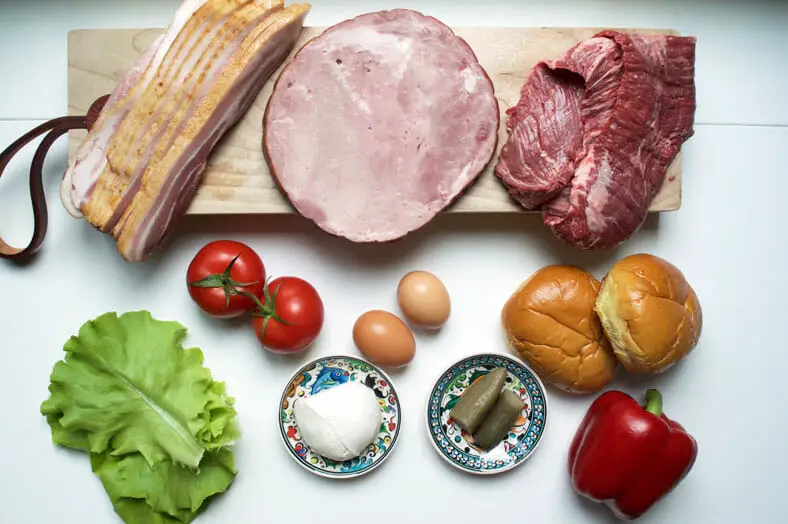
About the Recipe
It probably goes without saying, but this is not a dish very suitable for the vegan and vegetarian lifestyles. Regardless of what type of chivito gets prepared, there’s bound to be plenty of meat in it.
Making your perfect chivito is thankfully a total cinch. All you need to really keep in mind is that at the base of the sandwich needs to be your keystone meat: a large piece of seared steak. Uruguayans in general are major consumers of beef – especially grilled beef – and beef production plays a large part of the country’s local and export economy.
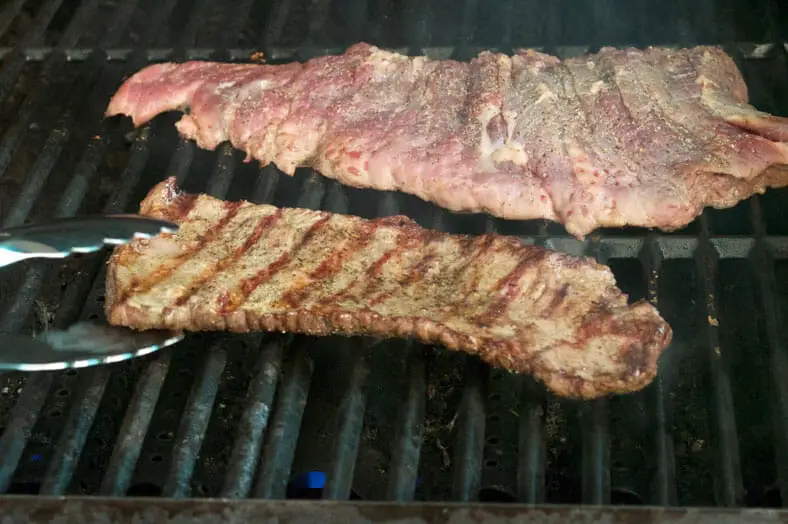
Depending on who you ask, people will suggest either skirt steak or filet mignon, but it seems like the cut is largely up to you. Skirt steak seems to be the most popular choice, especially since it’s on the cheaper end of the “cuts” spectrum.
Either on the grill or in a piping hot pan, start by searing your steak until it’s cooked and browned on the sides. Depending on your preferences, now would also be a good time to cook your strips of bacon and/or an egg to go on top. Bonus points for efficiency if you do.

With your steak freshly cooked, you’ll layer it on top of a piece of nicely buttered bread. Even the ideal type of bread is up for debate here, as some (like our source recipe) will suggest more a pan catalan mini-baguette, while others will choose a seedless hamburger bun as their pick. Again, this is entirely up to you.

After your meat and bread have become well-acquainted, start by layering your remaining toppings and build up your chivito. You might want to add anything like lettuce, tomatoes, cheese, bell peppers, mayonnaise. All of these are typical ingredients you might find on a chivito, and you can’t go wrong with any of them.
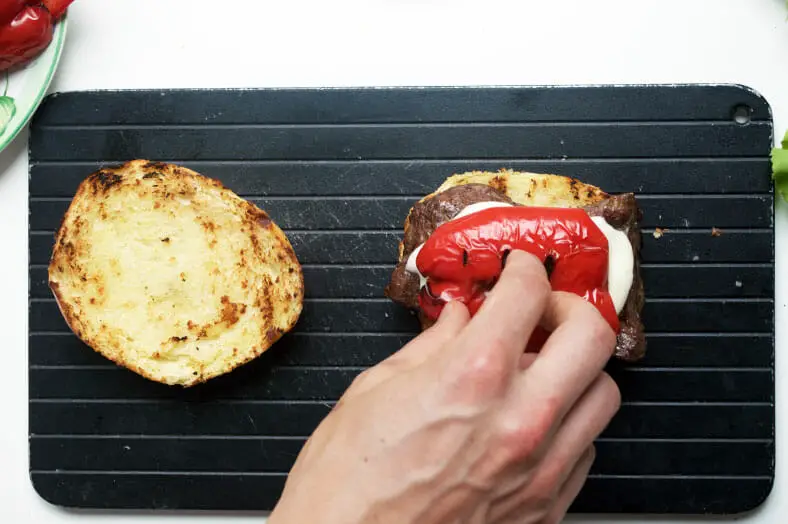
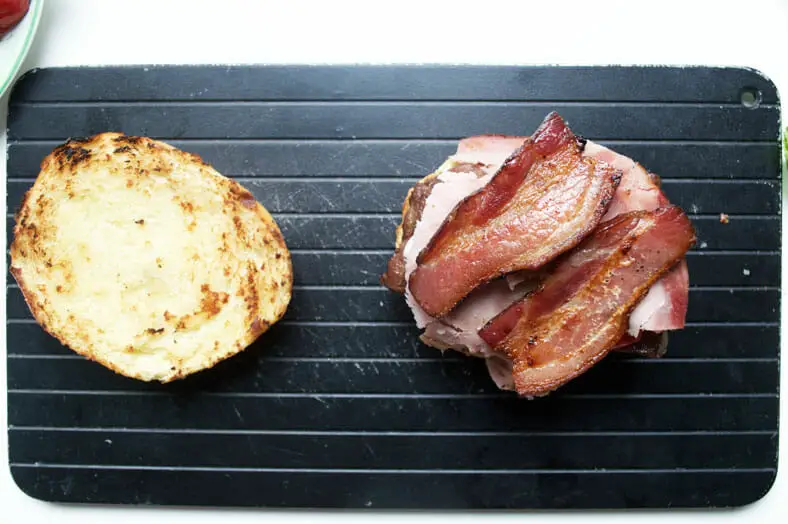
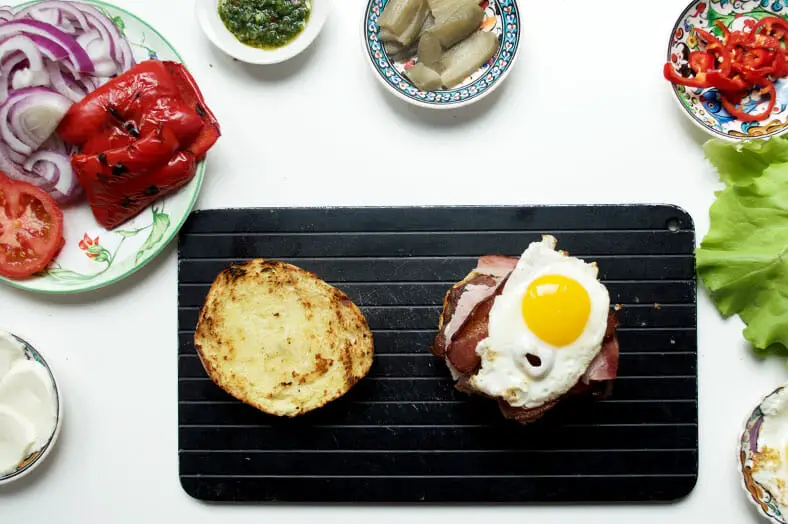

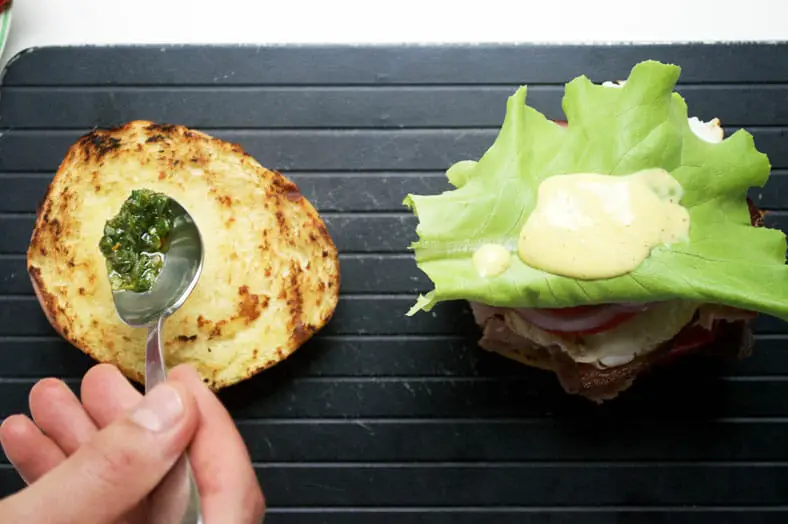
Finally, top your chivito with your egg and any remaining sauce, close the sandwich and enjoy!
Our Take on the Recipe
In finding a source recipe to go by, one of the toughest parts was to discern which elements of any given chivito recipe were close enough to the “real deal.” That’s generally the challenge when coming into a recipe as versatile and flexible as chivito is.
What we ended up opting for was a recipe that was as simple as it was tasty, hence we chose this recipe as our original reference.
In our preparation, though, we did take some of our own liberties. Perhaps the foremost one was the use of a grill for the cooking of most of our meats. We took a really nice piece of shoulder cut beef for our chivito, although we tested the recipe with some skirt steak and it came out just as nicely. Both cuts of beef were seasoned liberally with salt and pepper and thrown on the grill.
While the beef was cooking, we took a cast iron pan to cook our bacon and eggs alongside it. We started with the bacon, which then left enough residual fats in which the eggs could cook nicely. While a lot of chivito recipes will call for hard boiled eggs, we went with an over easy egg for ours out of a personal preference for runny yolks.
In the absence of truly great cured ham, we went with some pre-cooked ham that we seasoned and lightly grilled as well. For the meat-counterbalancing-vegetables, we added tomatoes, lettuce, gherkins, onions, bell peppers and topped them with homemade mayo and mozzarella cheese. There were a lot of ingredients, but it was still possible to eat the entire thing by hand!
What we should absolutely warn you about, though, is that chivito should be treated as a standalone meal. There is enough in the sandwich to leave you nourished for a long, long while, and it’s also incredibly flavorful and delicious on its own too.
Enjoy!
What would you put in your chivito? Comment below!
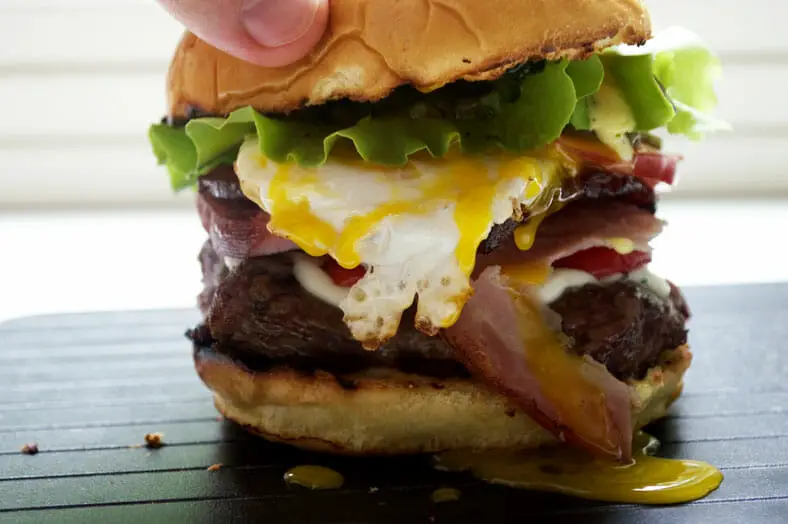
Food styled by: Phil Roepers


I had one if these during my travel to Uraguay in the SUMMER of 1986…my only suggestions for me us NO EGG or Mayo (allergic) everything else was great and delicious. Viva LA beef.